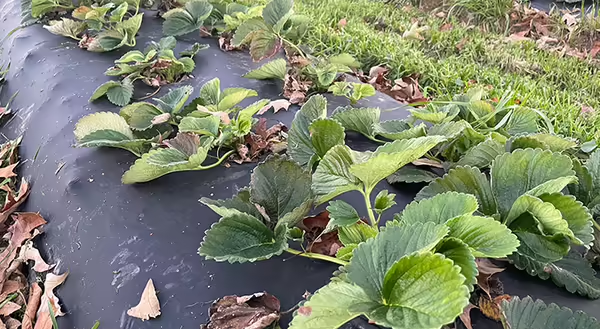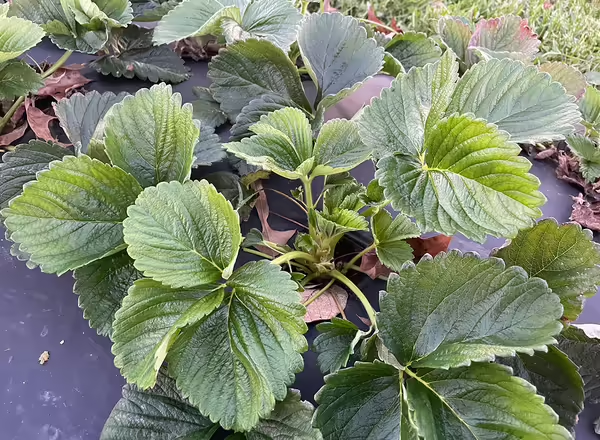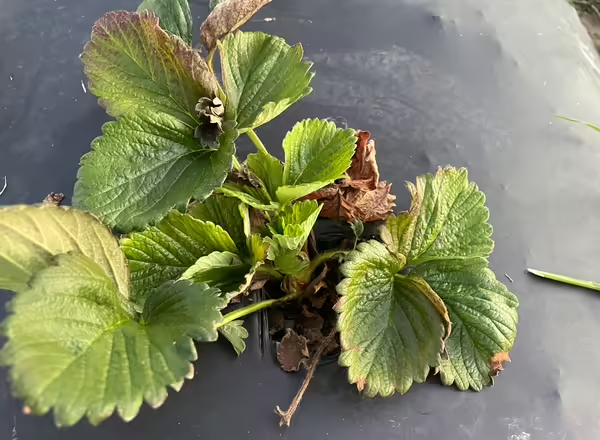
As strawberry plasticulture growers are closing in on the end of the fall growing season for the annual production system, the impact of the relatively new strawberry fungal disease, Neopestalotiopsis, is starting to be seen. Even with diligent spray programs, plant death and decline has still been an issue for growers. Professor of plant pathology with the University of Florida, Dr. Natalia Peres, is scheduled to provide an overview and most current management recommendations for this disease on February 12, 2025, during the Southern Illinois Fruit and Vegetable School in Mt. Vernon, Illinois.
Walking through a couple of strawberry plasticulture fields towards the end of November, a few things were noticeable.
First, the annual ryegrass cover crop seeded between the rows of black plastic mulch was well established, having been recently mowed (photo on right, B. Aly, Illinois Extension 2024). The established cover was doing an excellent job of holding soil in place, suppressing other weeds from growing, aiding in overall water drainage within the field, and maintaining strips of actively growing plant material in an otherwise uncropped portion of the field.


Second, the prolonged warm fall temperatures have allowed for excellent branch crown development in healthy plants. Random scouting and counting of branch crowns indicated that healthy plants typically had three strong branch crowns while weaker, unhealthy plants might have formed one small branch crown. Heading into early winter, just ahead of applying row covers across the fields, ideal branch crown development would be between three and five branch crowns.
Lastly, the number of missing or poorly growing plants was noticeable walking down the rows. In the years prior to neopest, strawberry plasticulture plants would be growing into each other, making the rows appear to be a solid mat, with many leaves being the size of your hand. In several counts of 20 plants down a row, 25% to 30% of the plants were missing or showing just a small amount of green growth from the very center of the crowns. In comparison to the healthy, actively growing plants, the presumed infected plants had a dull and yellowy to somewhat reddish look to the leaves, little to no branch crown growth, and very small leaves. At this time, no diseased plants have been sent to the plant clinic for diagnosis from these fields.
It would be expected that most growers will have the row covers pulled across their fields just ahead of this predicted cold weather pattern coming through the last few days of November. Scouting and plant counts should be done in early spring when covers are removed to get an idea of plant loss through the winter and hopefully help predict harvest needs.